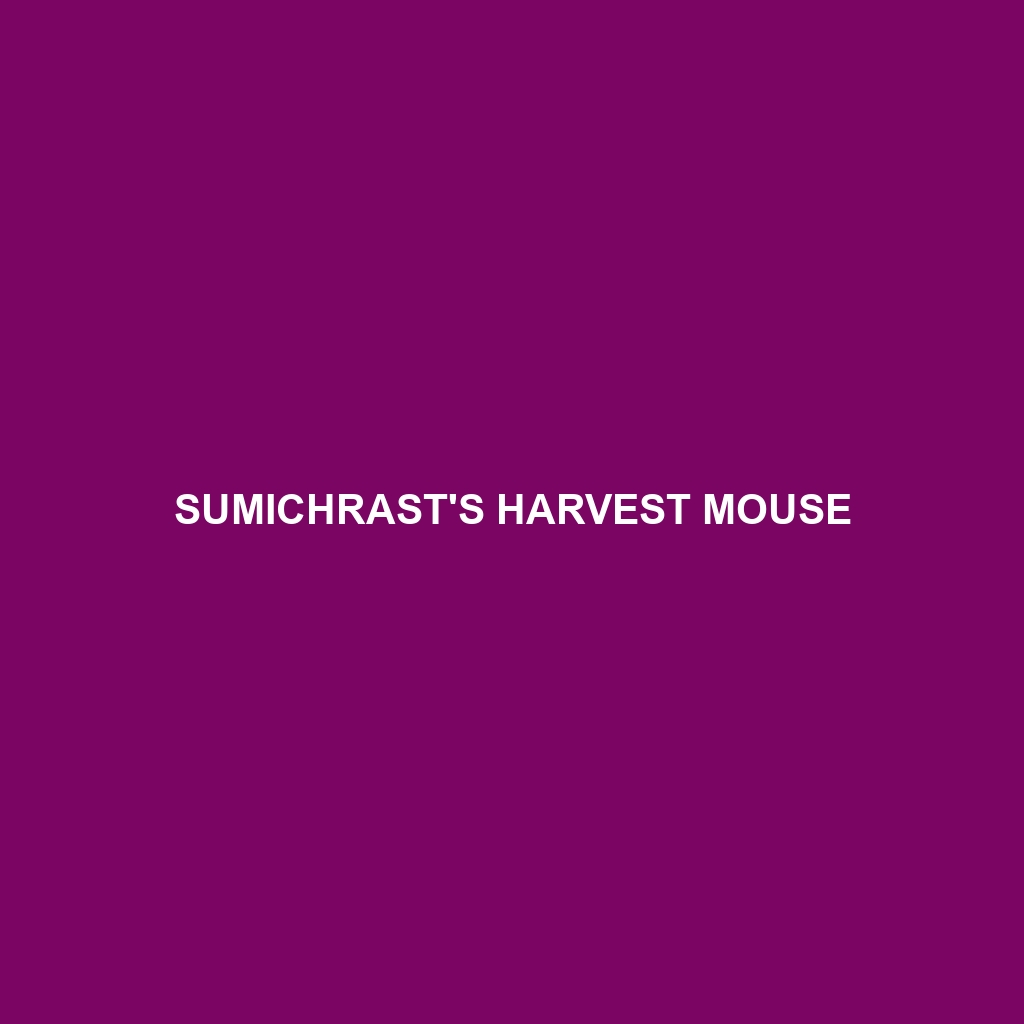Sumichrast’s Harvest Mouse
Common Name: Sumichrast’s Harvest Mouse
Scientific Name: Reithrodontomys sumichrasti
Habitat
Sumichrast’s Harvest Mouse is primarily found in Central America, with its range spanning from southern Mexico to western Honduras. These small rodents prefer habitats that include grasslands, agricultural fields, and areas with dense vegetation, especially near water sources. They thrive in environments that offer plenty of cover, such as tall grasses and shrubbery, which play a crucial role in their survival.
Physical Characteristics
This species typically measures about 10 to 12 centimeters in body length, with an additional tail length of 8 to 10 centimeters. Their fur is soft and densely tufted, generally exhibiting a grayish-brown coloration on the dorsal side, while the belly is lighter, often white or cream-colored. Distinctive features include large, rounded ears and a slender body shape, which aid in their agility and ability to navigate through dense underbrush.
Behavior
Sumichrast’s Harvest Mouse is primarily nocturnal, exhibiting a range of interesting behaviors. They are known for their excellent climbing skills, often seen foraging in low shrubs or climbing through grasses. These mice construct nests using grasses and other plant materials, typically located close to the ground. Socially, they tend to be solitary but may share their habitat with other individuals during the breeding season.
Diet
The diet of Sumichrast’s Harvest Mouse consists mainly of seeds, grains, and green plant material. They are opportunistic feeders and will also consume fruits and insects when available, adapting to seasonal changes in food supply. Their foraging habits can significantly impact seed dispersal in their ecosystems, making them crucial for plant growth.
Reproduction
Sumichrast’s Harvest Mouse breeds throughout the warmer months, typically from May to November. The female typically has two to three litters per year, with each litter containing about three to six offspring. After a gestation period of approximately 24 days, the young are born helpless and will stay with their mother for a few weeks before becoming independent, allowing them to learn essential survival skills.
Conservation Status
Currently, Sumichrast’s Harvest Mouse is classified as vulnerable due to habitat loss and degradation, primarily from agricultural expansion and urbanization. Conservation efforts are critical to protect their remaining habitats and ensure the survival of this species.
Interesting Facts
This species is notable for its ability to adapt to various ecological niches, making them an intriguing subject of study among ecologists. In addition to their role in seed dispersal, they are also a food source for various predators, illustrating their position in the food web.
Role in Ecosystem
Sumichrast’s Harvest Mouse plays a vital role in its ecosystem by contributing to seed dispersion and maintaining plant diversity. Their foraging behaviors help to aerate the soil and promote plant growth, while their presence provides a food resource for a range of predators, including birds of prey and snakes.

